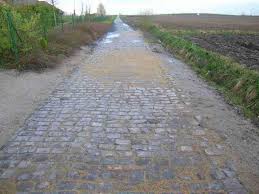记忆方法
记忆“pave”的方法是将它与“path”结合,形成“pave the path”,想象你在铺设一条道路(path),每一步都是平稳的,就像“pave”,意味着铺平道路或打下基础。这种方法通过构建一个情境来帮助记忆单词的含义。
以上内容由AI生成, 仅供参考和借鉴
中文词源
pave 铺路
来自古法语paver,铺路,来自拉丁语pavire,击打,踩,践踏,来自PIE*pau,砍,击,引申词义思考,词源同pudenda,compute,putative.
英语词源
- pave (v.)
- early 14c., "to cover (a street) with stones or other material," from Old French paver "to pave" (12c.), perhaps a back-formation from Old French pavement or else from Vulgar Latin *pavare, from Latin pavire "to beat, ram, tread down," from PIE *pau- "to cut, strike, stamp" (cognates: Latin putare "to prune;" Greek paiein "to strike;" Lithuanian piauju "to cut," piuklas "saw"). Related: Paved; paving. The figurative sense of "make smooth" (as in pave the way) is attested from 1580s.
权威例句
- 1. The town council decided to pave the square before the Hall.
- 市议会决定把市政厅前的广场铺上石板.
- 2. I believe this treaty will pave the way to peace in Europe.
- 我相信这个条约将为欧洲的和平铺平道路.
- 3. The mushroom development of technology will pave the way for improving our economy.
- 科学技术的迅猛发展将为我们改善经济状况铺平道路.
- 4. I do hope the treaty will pave the way to peace in the Middle East.
- 我真希望这个条约将为中东的和平铺平道路.
- 5. Their economic policy pave the way for industrial expansion.
- 他们的经济政策为工业发展铺平了道路。
